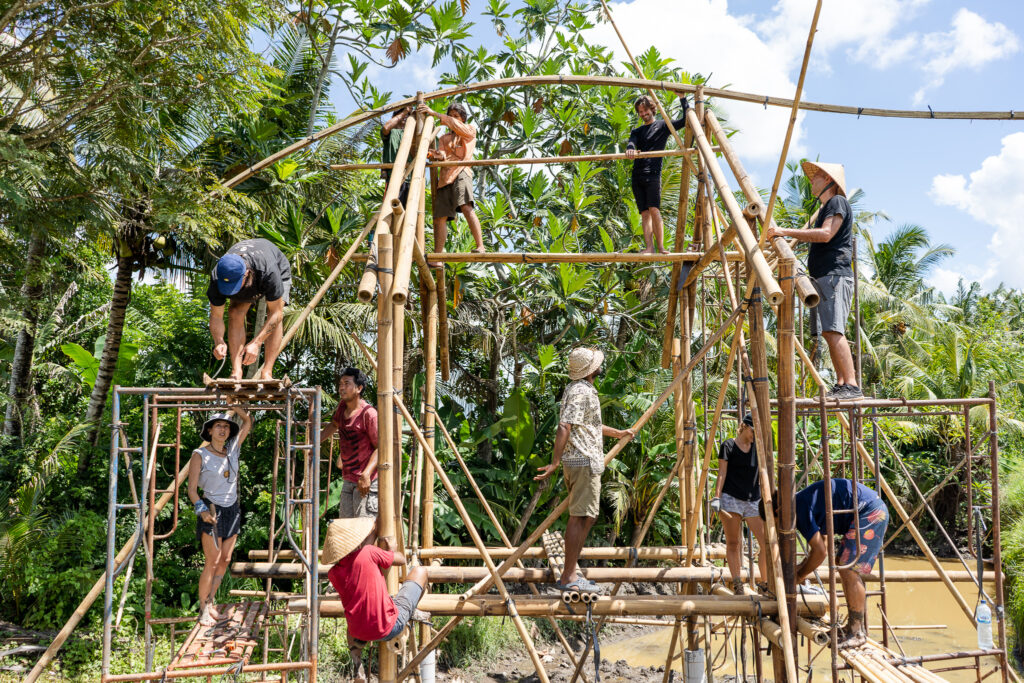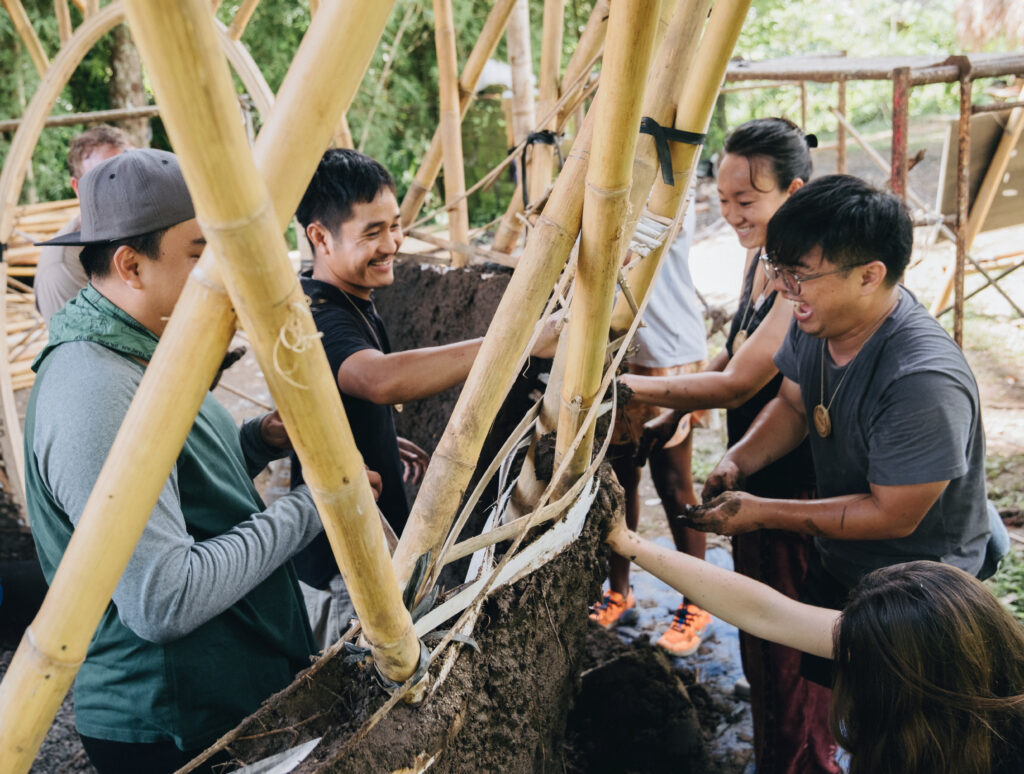How To Avoid The Most Common Mistakes When Building With Bamboo
By Maria Farrugia & Sai Goutham | July 28, 2021 | Construction -
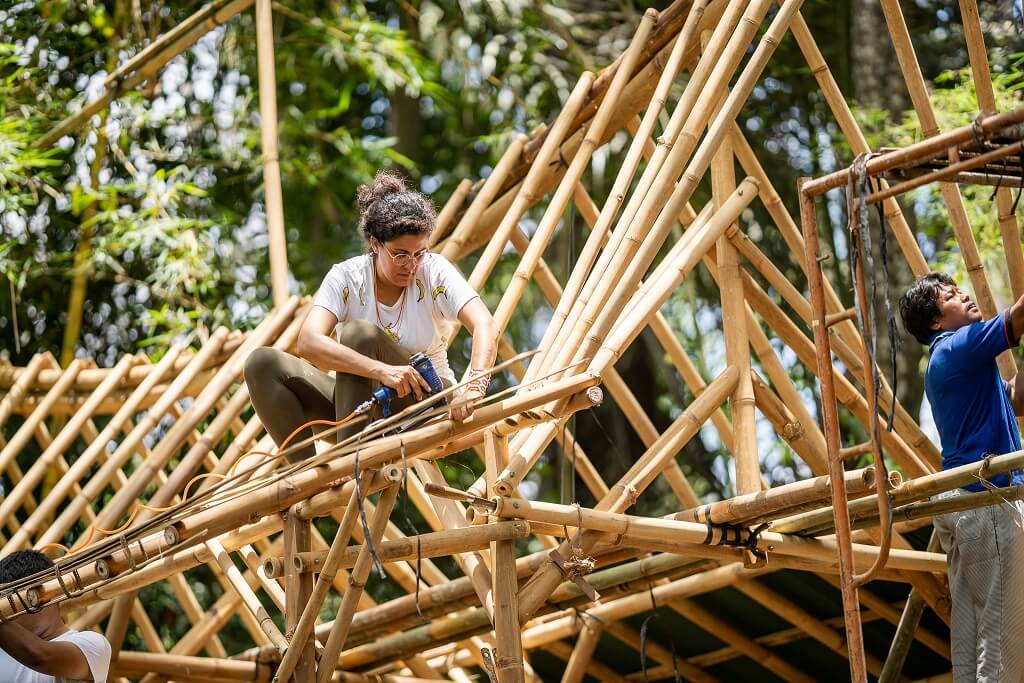
While bamboo holds incredible potential as a building material, efforts to build durable bamboo structures often fall short with errors made in both the design and building process. Bamboo structures are often criticized for their lack of durability, and before treatment technology was discovered, this was one of the pitfalls to building with bamboo, nowadays however, architecture firms like IBUKU have proven that if designed well, treated right, and maintained a bamboo structure can last a lifetime.
Besides poor treatment, there are other errors made when building with bamboo and these are often overlooked, but they hold equal weight in ensuring the longevity of a bamboo structure. There are plenty of great guides that explain how to build with bamboo, however information falls short when addressing what not to do. In this article, we will share how to avoid the most common mistakes when building with bamboo.
The 4 Ways To Avoid The Most Common Mistakes When Building With Bamboo
- Select the right species of bamboo
- Treat the bamboo effectively
- Consider the characteristics of bamboo in your design
- Quality control your bamboo and construction on site
1. Select the right species of bamboo
Over 1600 species of bamboo have been recorded around the world, less than 50 of these have been found to be good for construction. Here in Indonesia, we have access to over 100 species of bamboo, out of these we use just 7 species of local bamboo for construction.
Some criteria to help identify bamboo for construction include: the potential length of the bamboo (ideally more than 12m high), the diameter of the bamboo, and the thickness of the culm walls; the thicker the wall the greater the strength. Of course, there are some exceptions and bamboo architects have found ingenious ways, many still to be discovered, of using smaller bamboo to achieve structural integrity- one example is by bundling small diameter bamboo’s together into one single member. As a general rule, research your locally available bamboo and discover how it is being used by experienced experts.
Here is a short article about the 7 bamboo species we use the most at Bamboo U: https://bamboou.com/projects/the-7-bamboo-species-we-use-the-most/
It is also important to use mature bamboo poles that are harvested at the right age. A bamboo pole takes 6-9 months to grow to its full height but it takes 3-4 years to grow in diameter and thickness, making it strong and viable for construction.
Moreover, at these different stages of growth, bamboo contains varying sugar levels. Bamboo that is not harvested at the right age doesn’t have stabilized sugar levels and attracts insects which compromise the strength of the bamboo.
It is of crucial importance that when building a bamboo structure high-quality bamboo poles are sourced to avoid cracking, splitting and degradation due to pests. If you are buying bamboo, do so from trusted sources (farmers/ suppliers) who can provide you with high-quality culms. To learn more about what constitutes a high quality bamboo pole have a look at our article for best practice bamboo harvesting: https://bamboou.com/projects/your-go-to-guide-for-harvesting-bamboo-sustainably/

2. Treat the bamboo effectively
Good quality treatment is very important to make your bamboo buildings durable. Starch and sugar content in bamboo makes it vulnerable to insects like termites, borers, the powder post beetle and even fungi. If not treated properly, bamboo buildings will only last a few years before they are eaten and begin to degrade.
There are many chemical bamboo treatment methods and techniques available that turn bamboo into a durable construction material. Treating round bamboo poles with borates is one of the most effective, and user-friendly methods. Have a look at our article for a step by step guide on how to treat bamboo in your backyard: https://bamboou.com/projects/treating-bamboo-in-your-backyard/
Remember to treat your harvested bamboo as soon as possible, the preservability of the bamboo decreases with time after harvest. Once your bamboo is treated well, dry it properly before using it for construction.
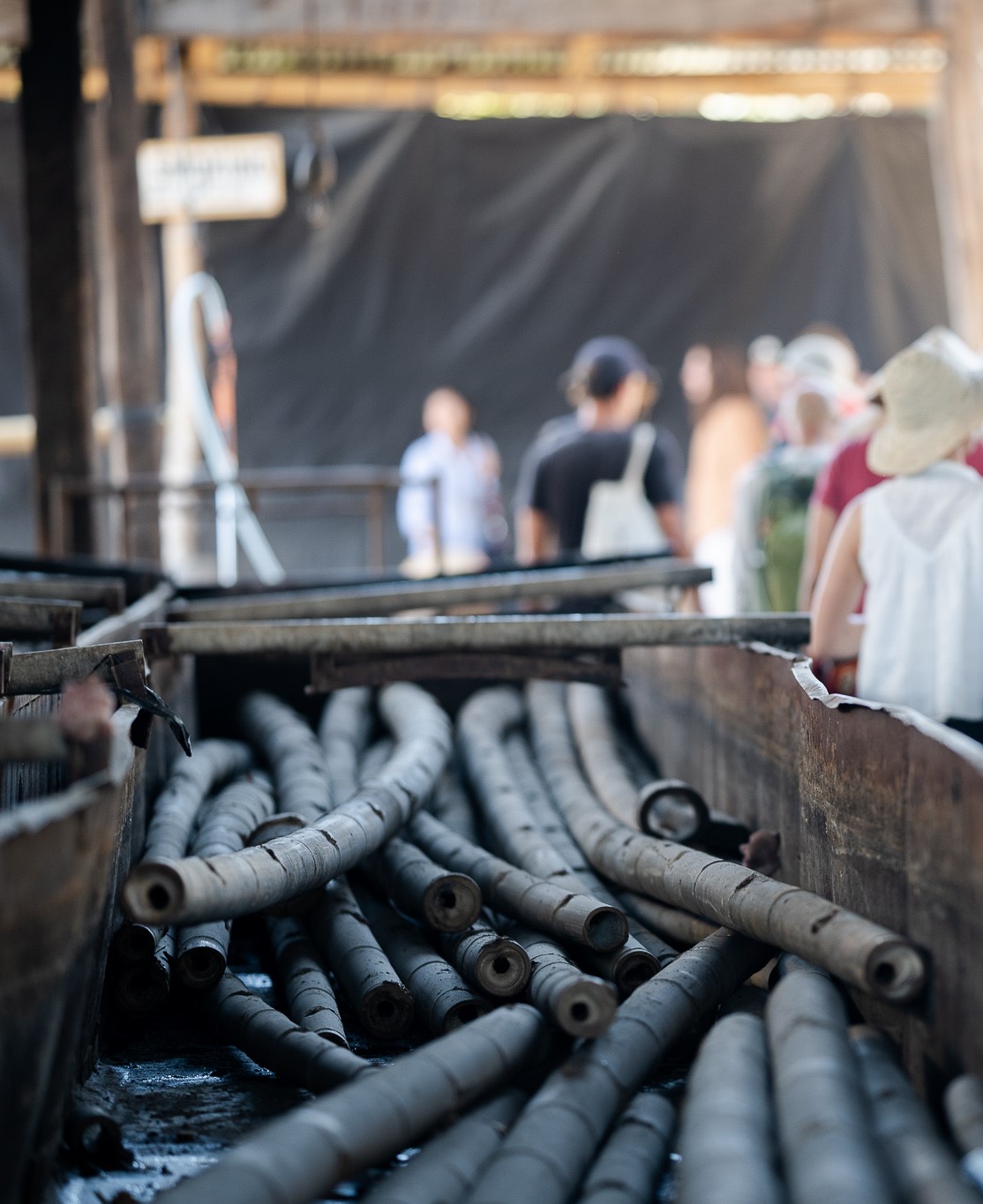

3. Consider the characteristics of bamboo in your design
When designing with bamboo there are some essential requirements that must be considered. Elements like sunlight and moisture can weaken bamboo poles and make them rot. A well-designed bamboo building needs a good roof and strong foundations that protect the bamboo.
Bamboo structures should be raised up at least 40cm from the ground. A moisture barrier between the bamboo and footings can also be added for extra protection.
A very common mistake we see with bamboo buildings is overhangs that are designed to be too short to protect bamboo columns and floors, making the bamboo susceptible to weathering from sun and rain. Overhangs in bamboo buildings should be designed to be 60cm - 150cm depending on the height of the structure (taller buildings will need a larger overhang).
Finally, the roof pitch is also important to ensure the longevity of your structure. If building a roof out of bamboo pelupuh or flattened bamboo then you’ll need to have a minimum 40-degree roof pitch and rafters should not be placed more than 40 cm apart. Have a read through our article about building strong and durable roofing systems for bamboo structures: https://bamboou.com/projects/5-roofing-systems-for-bamboo-buildings/
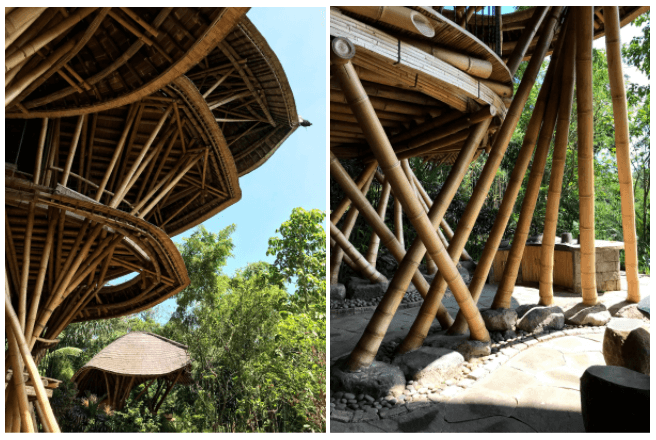

4. Quality control your bamboo and construction on site
Quality control on site is the foundation to a project’s success. Use only properly dried and mature bamboo for construction. Bamboo poles contract after drying and as it shrinks it will crack and split. Your bamboo poles should contain no more than 18% moisture to be viable for building.
Every bamboo pole is unique, they vary in color, size, and shape. Once on site begin by segregating your bamboo poles according to size and curvature this will help save time and mistakes.
Finally, store your bamboo on a raised platform, or lean it upright against a wall or structure. Avoid laying your bamboo on the ground directly as it will accumulate moisture and may rot. Designate a semi-permanent dry storage space on-site to store bamboo and cover your bamboo with high-quality tarpaulin.
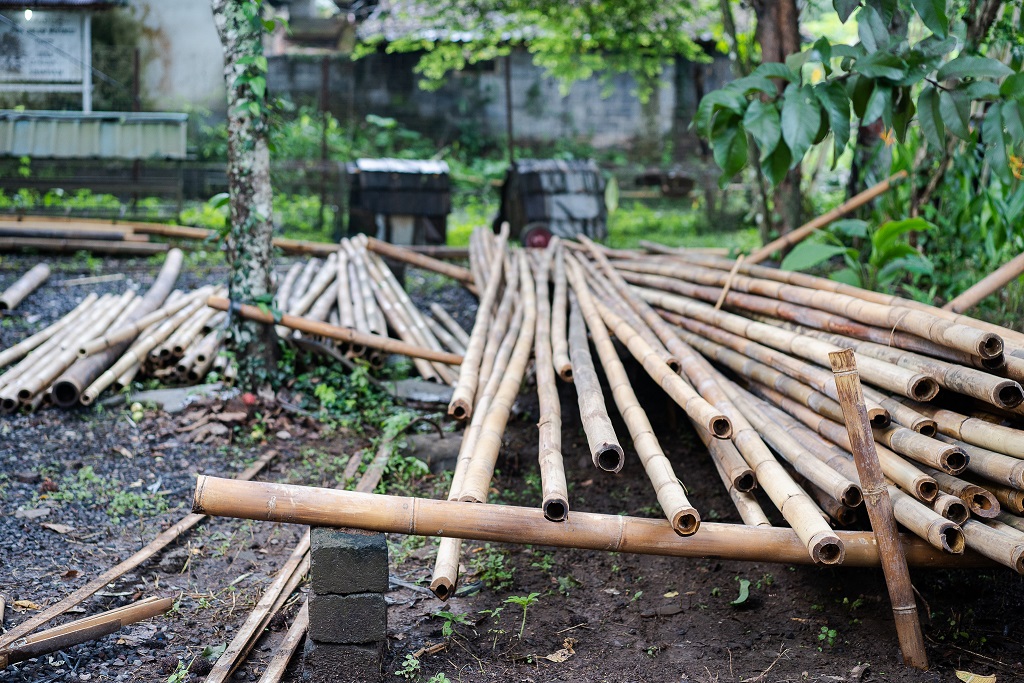

By understanding bamboo as a building material better it will help to avoid common mistakes often seen in bamboo buildings which impact the strength, durability and ultimately the credibility of bamboo as a viable building material. During the Bamboo U 11 week Online Immersion and the 11 day Bali Immersion we will take a deeper look at the botanical, mechanical, and structural properties of bamboo which heavily influence the construction of beautiful and structurally sound bamboo buildings.
Article by Sai Goutham and Maria Farrugia

Maria is the Bamboo U Director and Sai Goutham was the Research & Development Manager. Together they formulate ideas, write content and create illustrations to share knowledge of bamboo architecture and design.
OCTOBER 10-21, 2025
The 11 Day Bamboo Build & Design Course in Bali
In 11 days, we'll show you how to build bamboo structures we’ll share all that it takes to build with nature.
Start Anytime
The Bamboo Harvesting Course
The Bamboo Harvesting Course is an online step-by-step training to harvest and care for your bamboo clumps to ensure their longevity and productivity. This maximizes the potential of this beautiful grass as a rapidly renewable resource.Whether you are an architect, builder, or sustainability enthusiast, this mini course will enable you to utilize this rapidly regenerative resource as a durable construction material.It will help remove any fear or doubt about the durability of bamboo and help you build reputable bamboo structures that stand the test of time!












